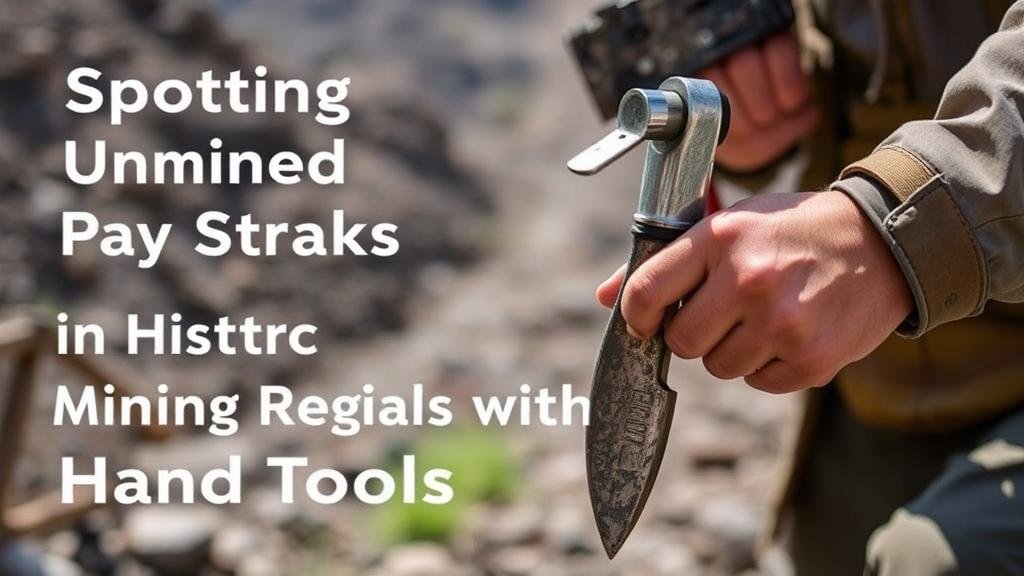Spotting Unmined Pay Streaks in Historic Mining Regions With Hand Tools
Spotting Unmined Pay Streaks in Historic Mining Regions With Hand Tools
Mining has long been an essential part of human history, playing a crucial role in economic and industrial development. But, many historic mining regions often conceal unmined pay streaks–areas rich in precious materials overlooked or forsaken by past miners. This article explores methods for identifying these unmined areas using hand tools, providing insights that are both scholarly and accessible.
Understanding Pay Streaks
Before delving into spotting unmined pay streaks, it is vital to understand what pay streaks are. In mining, a pay streak refers to a concentration of valuable mineral deposits within a specific area. These deposits are often associated with geological formations, and their recognition is vital for efficient mining operations.
Historical Context of Mining Regions
Historic mining regions, such as the Sierra Nevada in California or the Klondike in Alaska, represent areas where extensive mining activities occurred during various gold rushes. Many of these regions saw intense scrutiny but often left behind unmined pockets due to technological limitations or miscalculated geological assessments.
Identification Techniques for Unmined Pay Streaks
Identifying unmined pay streaks effectively requires a combination of observational skills, geological knowledge, and the right tools. following techniques can aid miners in spotting these areas:
Utilizing Geological Maps
Geological maps provide a comprehensive overview of terrain, including rock formations and mineral distributions. By comparing historic maps with current conditions, potential unmined areas can be identified based on shifts in landscape.
- Study the stratigraphy of the area to identify previously ignored formations.
- Look for depositional features such as placer deposits or floodplain remnants.
Analyzing Soil Composition
Soil sampling is crucial for discovery. Hand tools such as shovels and trowels can be used to dig several test pits in areas of interest. Analyzing the soil for gold flakes or other minerals can indicate whether a pay streak is present nearby.
- Use a pan to separate lighter materials from heavier minerals during sampling.
- Conduct several tests over a wider area to ensure statistically significant results.
Visual Indicators of Mineralization
Skilled miners can often spot visual signs that suggest the presence of unmined pay streaks. Features to look for include:
- Discoloration in rocks, which may indicate oxidization of gold or other minerals.
- Presence of quartz veins or alterations in sedimentary layers that often host mineral deposits.
Importance of Hand Tools in Modern Prospecting
While technology has significantly advanced the mining industry, hand tools remain indispensable for prospectors. They serve multiple purposes that are particularly suited for historic mining regions:
Portability and Accessibility
Hand tools are lightweight and easy to transport, making them ideal for remote or rugged areas where larger machinery cannot operate.
Cost-Effectiveness
Investing in traditional hand tools is considerably more economical for individual prospectors compared to large machinery, allowing newcomers a lower barrier to entry.
Case Studies and Real-World Applications
Several successful modern prospectors have employed these techniques with hand tools, yielding impressive results:
- A 2019 case in the Lost Dutchman Mine region in Arizona saw a gold miner uncover a pay streak long considered depleted, utilizing soil sampling and analysis.
- In British Columbia, a small group of prospectors used geological maps and visual indicators to discover a significant unmined area, demonstrating how historical knowledge can lead to modern success.
Conclusion
Spotting unmined pay streaks in historic mining regions is a methodical process that can yield substantial rewards. By utilizing geological maps, soil analysis, and visual indicators while relying on hand tools, prospectors can successfully uncover valuable mineral deposits. As technology continues to advance, understanding the worth of traditional methods continues to empower miners of all levels. For prospective miners, immersing yourself in the history and geology of a region could lead to discovering new mining opportunities.
Actionable Takeaways
- Familiarize yourself with local geological maps before heading into the field.
- Invest in quality hand tools and practice soil sampling techniques.
- Study the history of mining in your area to identify potential unmined regions.



